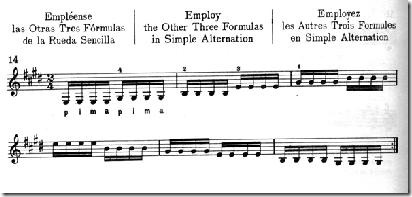The Technique designed to enhance the sustain of the instrument
The plucked string has two limitations: the initial attack and the following decay. What does that mean? The attack is the moment when the string has been pulled by the finger and released. Think of this as the first snap. Why consider this a limitation? Think of a woodwind, brass or orchestral string player. By judiciously blowing or bowing, a note can be produced that seems to swell up from nowhere. The guitarist can't do this. How about sustain and decay. Decay here does not indicate maggots or rot, no, this refers to the gradual loss of air movement as the string slows down and stops. The note goes away, and in the case of the guitar, notes decay quickly. And don't make jokes here about the case "We play the guitar, not the case!" or "The guitar isn't played while it's in the case."
There is not too terribly much we can do about the initial attack; aside from proceeding notes in legato figures, the fingers must pluck the string in some manner. The sustain? Well, that we can fool the ear into hearing! Tremolo is a unique guitaristic technique that creates the impression of continuous sustained pitch. How? Simple. Look at the Pascual Roch exercises from the 19th century. You will note that four sixteenth notes (say all E) are played with the four digits of the right hand, in order (p,i,m,a) and while this is neither long in duration nor a single note, if played fast enough, cleanly enough and repeated for say sixteen beats -- especially as a melody against a bass line, and you give the listener and impression of extended duration.












No comments:
Post a Comment